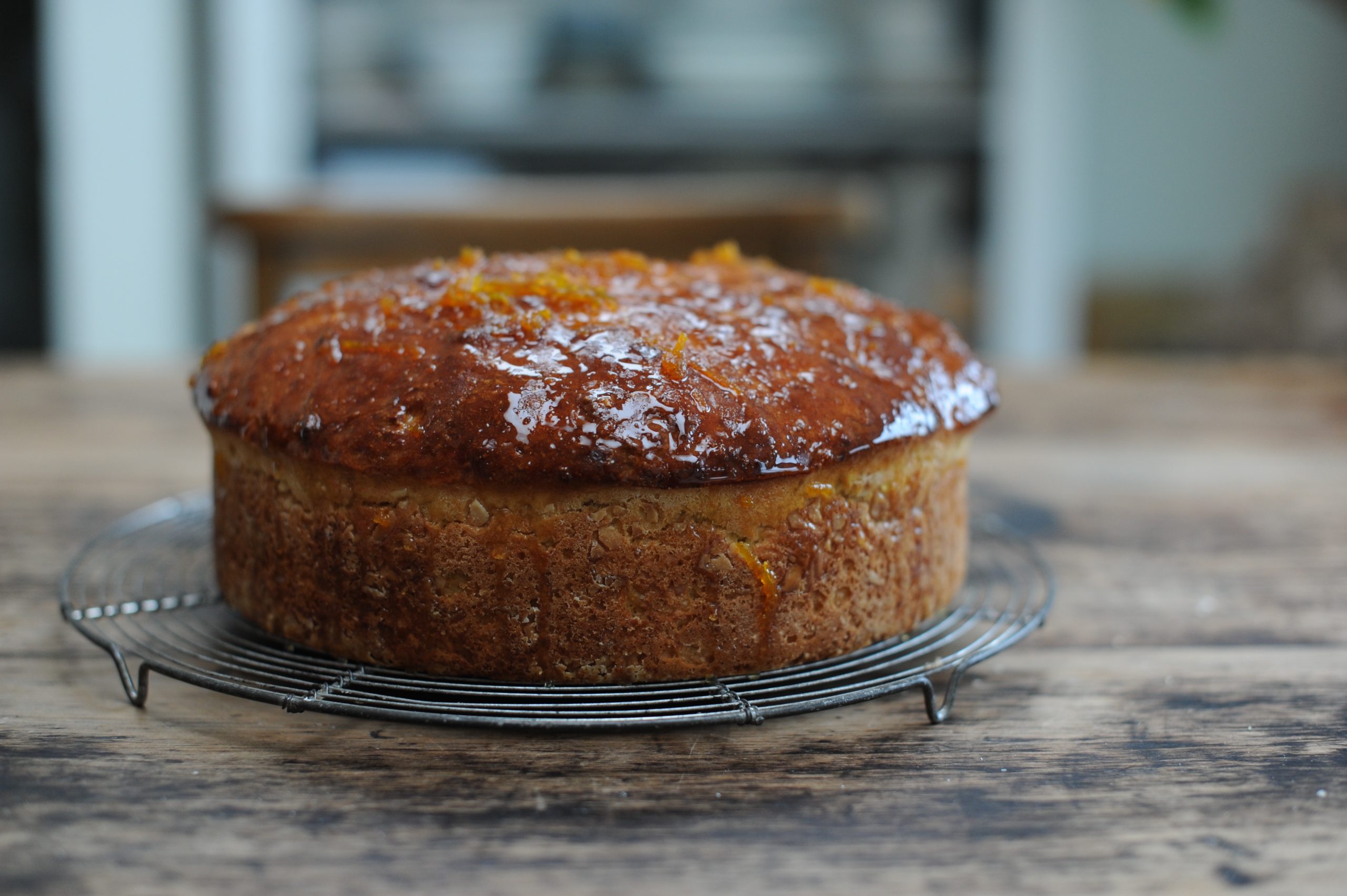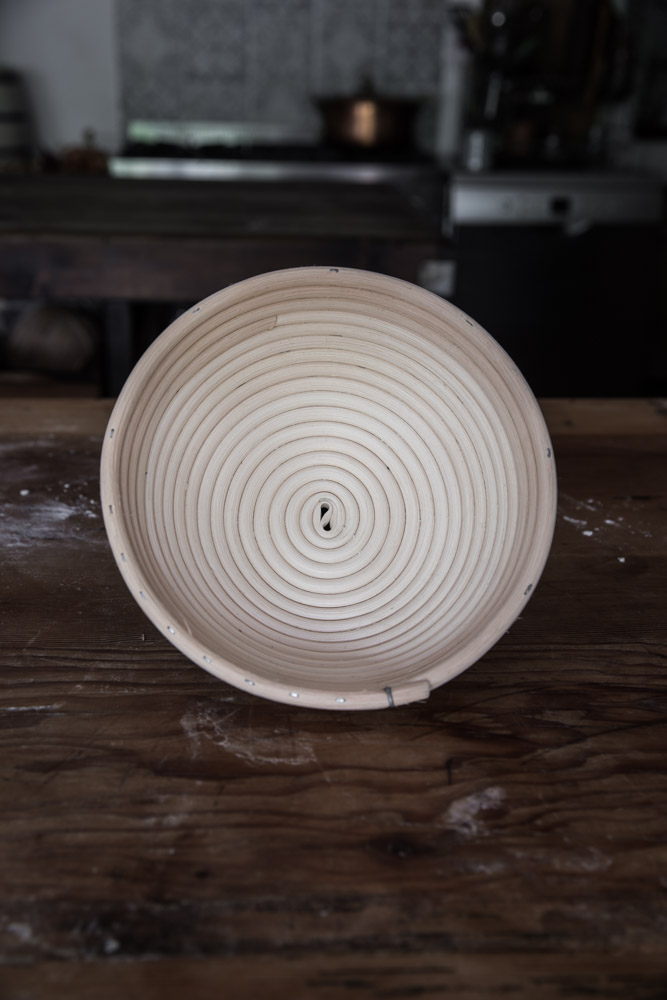Listen to the audio of this post

Introduction
It's not much fun having IBS at any time but it seems especially hard at Christmas and for those people who find that they can digest Sourdough but not other baked goods this recipe is loved
I was in Morocco earlier this year and bought oranges from the street stalls. The winter months seemed so far away, standing in the sunshine watching everyone go about their daily lives. This morning, I thought I might dig out this recipe from the Sourdough School Diploma and share it for all to enjoy. I often recommend this recipe as an alternative to a Christmas cake for those who have IBS. The standard Christmas cakes are loaded with fruit and candied orange peel, and there are some people who, when I test their genetics, you can see that no matter what they do to support their gut health, they cannot eat certain foods without some support in predigesting (i.e. fermenting) the ingredient. This is because they have a genetic predisposition to IBS, and the stress and indulgence of Christmas is a huge IBS trigger. So often, avoiding dried fruit is something that can help, as for many this is a trigger. For those who suspect a gluten intolerance, we often discover that it is actually a FODMAP issue. This cake is one that is fermented and the overnight long slow fermentation helps to predigest the flour making it easier on your digestion. It has an adjustable amount of fibre that you can balance, allowing you to enjoy eating and participating in the festivities without worrying about bloating and gas. There are some suggestions below of how you can do this.
It’s moist, sweet, orangey, and there is nothing quite so lovely as making your own candied orange peel. Every flour is different, and you can make this cake with different flours. I love diversity in my flour, so I happily mix up whatever I have left in the cupboard, for example, some spelt, a little rye, and some white 00. I realise this is quite radical because I am usually pretty specific about flour, but it is about understanding, and if you can have a play with the hydration, you will learn how to be a bit more versatile with your flour in this recipe.
How I Determine Which Flour to Use
So flour and cake are about several different things. In the very first place, I like to add a little more fibre into my cakes to nourish the micro microbes, but this also brings a level of moistness and flavour. It’s about the outside layer of the grain, which often requires a little bit more hydration. The problem is that the standard way of making cakes is that you just mix and you’re done, but when you’re using higher fibre flour or even slightly older flour, you need to give the flour time to hydrate. That’s why when you are adding water to determine how much hydration it needs, the trick is to mix a slightly lower quantity of water or liquid and then wait for five minutes and then make an adjustment. That’s because this gives you what I would call a true hydration level. Often the problem you get is that different levels or different flour give you different results, and that’s why you can make a cake one day and it will be lovely and moist, but choose a different brand of flour and it’s dry.
Playing with Flour Blends
This is about understanding that you can play with flour. I like this recipe because I can get the family to eat something that has got fibre in it. One of my favourite blends with this is to add 30 or 40% wholegrain. That might be my botanical blend number two, which adds in diversity, but I might add 2 tablespoons of my XXX blend and then make the rest up with a standard plain white organic flour. I appreciate the fact that everybody has white organic flour, but my principles are always to stay away from pesticides. So let me share with you how I test to see if the cake is hydrated enough.
Testing Your Batter Consistency
The easiest thing to do is test it by checking how it drops off the spoon to get the right consistency. Simply mix your cake batter and then wait for 5 minutes. Put a large dollop on a spoon and hold it above the bowl and let it drop. If the batter runs off the spoon, then it is too wet, and you will need to adjust the flour. If it fails to drop, then add 20g more water, stir, and try again. The sweet spot is when the batter just falls off the spoon easily but steadily.
Baking Advice
Everyone’s oven is different, so consider the temperature and baking times I suggest as a guideline. In my experience, there’s often a 10-minute variable around the recommended baking time. If your oven runs hotter than mine, you can place a small tin or piece of foil over the top of the cake to prevent it from browning too quickly. Remove this cover a few minutes before the end of the baking time to allow the top to finish nicely.
I always position my cakes in the centre of the oven. If you have a fan oven, remember that these tend to run about 10°C hotter, so you may need to adjust the temperature accordingly. Also, because flour can vary, it’s essential to check your cake for doneness. I usually rely on two methods:
Visual Check: Look at the sides of the cake. Once the batter has slightly shrunk away from the edges of the tin, this is a good sign that moisture has evaporated and the cake is baked.
Skewer Test: Insert a skewer into the centre of the cake. If it comes out with batter on it, keep baking. If it emerges clean, the cake is ready.
Adding Marmalade for Moisture and Flavour
The trick with this cake is to get the marmalade on top while it’s still warm. Use a skewer to poke a few holes in the cake, then spread half of the marmalade over it while it’s still in the tin. Give it a few minutes so the warmth draws the marmalade down the sides, allowing it to seep through. Later, you can add the remaining marmalade on top once the cake is out of the tin. This might make it slightly more difficult to turn out, but the reward is a beautifully moist cake, as the marmalade finds its way all around and through the crumb. Ultimately, it’s a matter of personal preference—experiment to find the balance you love.
If you prefer, you can also use a good-quality shop-bought marmalade instead of making your own candied orange peel. You can amalgamate it into the cake using the same method described above, letting the marmalade’s syrupy sweetness infuse deeply into the warm crumb.
Have fun baking this, and let me know how you get on.
Disclaimer:
This information is provided for general educational purposes only and does not constitute medical advice. If you are experiencing digestive issues or have concerns about your health, please consult a qualified healthcare professional for personalised guidance and support
Starter: White
Makes 1 >
For The Leaven
- 40g of recently refreshed starter
- 80g string white flour ( I used marriages organic)
- 80g water @27C
For The Dough
- Shop all Equipment, flour, spice blend & Ingredients
- 200g lively bubbly starter (see above)
- 125g golden granulated sugar
- 60g unsalted butter, melted
- 100g sunflower oil
- 4 eggs, beaten
- 400g of a flour of choice ( 00, sifted spelt )
- 50 g wholegrain spelt or xxx Botanical Blend
- 9g salt
- 1/4 teaspoon spice mix.
- 180g water @28C
Bake Temp
170C
Bake Time
45 - 50 minutes
Equipment
- Small bowl
- Wooden spoon
- Large bowl
- Scraper
- 24cm x 5cm tin / 9 x 2 inch round tin
Tutorials
| Refresh starter 2nd Refreshment. | 2pm day 1 |
| Make leaven | 10pm day 1 |
| Mix all the ingredients except the marmalade. Add to a buttered and floured tin. Be generous with the butter as you do not want this cake to stick. Adjust hydration (- see method advise) | 8am day 2 |
| Prove in a warm spot in the kitchen. Depending on the hydration and flour this can be variable. | 8 - 12 hours |
| Bake once it is well risen. If it is slow then wait another hour or so. | 6pm day 2 |
Sourdough Cake
For the tin:
20g butter
40g flaked almonds
a large heaped tablespoon of flour
Serves 8 – 10







 Discovering the diversity of microorganisms found in sourdough
Discovering the diversity of microorganisms found in sourdough
i am very excited to try this recipe. possibly with the blood oranges i have. & hopefully without milk. if i were to use the blood oranges would you suggest changing anything? can you offer a way to replace the milk? thank you!
Any sweet citrus .. and any milk such as almond or oat milk is fine.
can i change the flour to almond flour ?
To any other nut flour – yes.
I made this yesterday – Scrummy!
Ooh this sounds amazing! Another to add to my list
Hi Vanessa,
Can I use 20g rye starter with the 00 flour to make the levain?
Yes
This looks and sounds delicious Vanessa ?